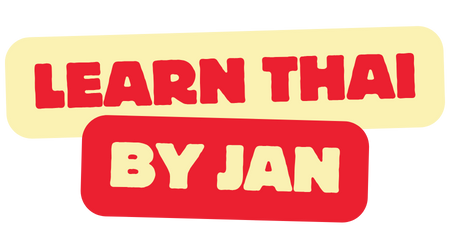
Thai Alphabet to English: A Simple Pronunciation Guide
Share
Sawasdee ka!
If you’ve started learning the Thai alphabet, one of the first things you probably searched for was a Thai alphabet to English overview. You wanted a simple, one-to-one match for every letter.
And you probably ended up more confused than when you started.
Why? Because a direct translation from the Thai alphabet to English just doesn't work. Thai has sounds that we don't clearly distinguish between in English. Trying to match them letter-for-letter is the #1 reason beginners get stuck with bad pronunciation.
So, let's do it the right way. Forget memorizing a confusing chart. Let's learn to make the sounds.
The Secret: It's All About the Puff of Air

In English, we don't pay much attention to the little puff of air we make when we say certain letters. But in Thai, it's the difference between two completely different sounds! This is called "aspiration".
- Unaspirated Sound: No puff of air. (Like the 'p' in the word "spin")
- Aspirated Sound: A strong puff of air. (Like the 'p' in the word "pin." Hold your hand in front of your mouth when you say it—you'll feel the air!)
We're going to group the tricky consonants by these sounds.
A Simple Guide to Thai Consonant Sounds
You can listen to all of the sounds in the video below, and then we'll break down the tricky ones.
@learnthaibyjan Thai Alphabet 44 🇹🇭 | How to learn Thai alphabet? | 44 Thai Consonants 🇹🇭 📚✍️ #learnthai #thailanguage #speakthai #studythai #thailand #learnthailanguage #thai #thaigrammar #thaivocabulary #thailesson #thaiwords #thaiphrase #thaistudying #thaiclass #thaiteacher #teachthai #thaicourse #thaiforforeigners #learningthai #speakthaieasy #ilovethai #learnthaiwithme #thailessons #thaitutor #thaiaccent #thailearning #learnthaionline #thailanguageschool #basicthai #thailearning #learnthaibyjan ♬ original sound - Learning Thai by Jan
Here are the most common consonants that confuse English speakers, broken down by the sound they make.
The "B" and "P" Sounds
-
บ (baw bai mai): The "B" Sound
- This is exactly like the English "b". Simple!
- Sounds like: boat, ball, boy.
-
ป (bpaw bplaa): The "Unaspirated P" Sound
- This is the sound of 'p' without a puff of air.
- Sounds like: the 'p' in spin, spot, speak.
-
พ (paw paan) & ภ (paw sam-pao): The "Aspirated P" Sound
- This is the sound of 'p' with a strong puff of air.
- Sounds like: the 'p' in pin, pie, park.
-
ผ (paw peung): The "Rising Tone P" Sound
- This makes the same aspirated 'p' sound as above, but because it's a High-Class consonant, it forces the word to have a rising tone.
The "D" and "T" Sounds
-
ด (daw dek): The "D" Sound
- This is exactly like the English "d". Easy!
- Sounds like: door, dog, day.
-
ต (dtaw dtao): The "Unaspirated T" Sound
- This is the sound of 't' without a puff of air.
- Sounds like: the 't' in stop, star, stick.
-
ท (taw ta-haan) & ธ (taw tong): The "Aspirated T" Sound
- This is the sound of 't' with a strong puff of air.
- Sounds like: the 't' in top, tie, tea.
Want to See It All in One Place?
Trying to remember all these sounds can be tricky without a reference. That's why having a clean, simple chart is so important.
If you haven't already, you should download our free printable Thai alphabet chart. It's the perfect companion to this guide.
Download my free Thai alphabet chart here
The Complete System for Learning Thai
This guide is just a small piece of the puzzle. The sounds of the consonants are just the beginning! To truly understand how to read and speak, you need to know about the vowels, the tones, and how they all work together.
I've put all of this information into one simple starter guide for beginners.
It covers everything you need to build a strong foundation, and it’s completely free.
Get the Complete Starter Guide Here
I hope this makes the connection from the Thai alphabet to English sounds much clearer for you. Focus on the sounds, not just the letters, and you'll be on the right path!
Happy learning, Jan
